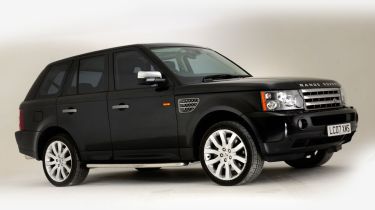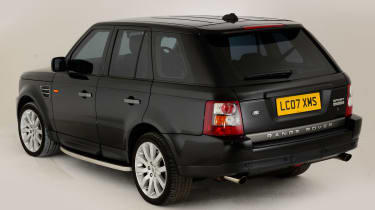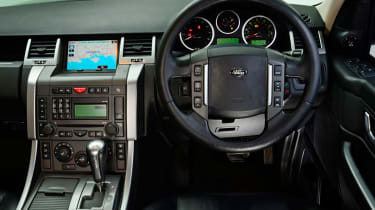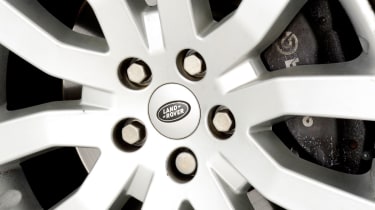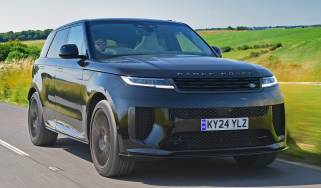Used Range Rover Sport buying guide: 2005-2013 (Mk1)
Using many traditional Range Rover design cues, but with a sportier, lower shape, the Range Rover Sport is a fantastic all-rounder
When the Range Rover Sport burst on to the scene in 2005, it polarised opinion, because it steered the iconic badge in a new direction. The Sport featured a similar grille and overall design, but it was less upright, lower and placed greater emphasis on handling and performance. This might have surprised conservative buyers at first, but the the Sport soon brought in a new fanbase and won over many of the old brigade.
This was partly thanks to the Sport still being very impressive off-road, despite its looks and name. In fact, the Sport can go almost anywhere its big brother can. Land Rover also judged the market beautifully, because the Sport arrived hot on the heels of the first performance SUVs, including the Porsche Cayenne and BMW X5. The Range Rover Sport isn’t perfect, though, and this guide should help you avoid potential pitfalls.
Five-year-old examples are available costing between £25,000 and £35,000 depending on specification, mileage and condition.
History
On its arrival in 2005, the Range Rover Sport was fitted with a popular 2.7-litre diesel or either 4.4 or 4.2-litre supercharged petrol engines, providing potent performance for a big SUV. In the autumn of 2006, the diesel line-up was improved by the addition of the 3.6-litre V8 diesel from the Range Rover, while the 2.7-litre diesel was replaced by a 3.0-litre TDV6 in early 2009.
With the Sport proving highly successful, a range-topping Autobiography trim level was added in 2010 and the 4.2-litre V8 was replaced by the latest 5.0-litre supercharged V8 developed by Jaguar, offering sports-car acceleration. At the other end of the spectrum, the V8 diesel was phased out in 2011 and an economy-focused 208bhp 3.0-litre diesel was introduced with company-car drivers in mind.
What is the best Range Rover Sport for me?
Land Rover continually evolved the Sport during its life, so it’s highly worthwhile getting the newest version you can afford. This is likely to be a safer bet than buying a tempting older model with a lavish specification, but more potential issues. Whatever the age, a complete service history and signs of no-expense-spared maintenance by careful owners are very reassuring.
More reviews
This might sound like an odd issue for a Range Rover, but also check on a test drive if it’ll be suitable for any rear passengers you may have, as both the rear bench and suspension are quite firm, which some find off-putting.
While rare, the TDV8 diesel is fantastic to drive, but as a compromise the 3.0-litre TDV6 is far more common and the best all-rounder when it comes to balancing economy and performance. Every Range Rover Sport is fitted with a smooth automatic gearbox as standard.
It’s worth noting that modifying vehicles is very popular in the Land Rover community, encompassing everything from styling accessories to engine and suspension upgrades. It’s important to know if aftermarket parts have been fitted, and if so, whether they could affect the warranty, reliability or – most importantly – safety of the vehicle.
Running costs, servicing & MPG
While some Range Rover Sports now appear cheap to buy, this is not a car you can run on a small budget. Requiring a service every year or 15,000 miles, the TDV6 will set you back at least £380 at every dealer visit, with a £930 bill likely in the seventh year. Prices for standard TDV8 maintenance are even higher, so plan to spend £470 for a normal service and £620 for a six-year check-up. V8 petrol cars are actually a bit cheaper to maintain, with annual checks coming in at £375 and a £605 service due in the seventh year.
The most expensive services usually indicate a cambelt replacement, with diesel models requiring this job every seven years or 105,000 miles. Petrol models don’t require this, as they’re fitted with chain-cams instead. Lesser maintenance costs to consider include new brake fluid after three years (costing £40) and draining the engine coolant every 10 years (costing around £100).
It’s best to go into Range Rover Sport ownership with your eyes wide open, as even routine servicing can throw up extra costs like belt and filter replacements.
The TDV6 diesel is definitely the pick of the bunch if economy is a concern, being the only engine to regularly top 30mpg. The V8 diesel returns around 25mpg and if you even need to ask about the V8 petrol models, you’re perhaps best considering something else, but 17 to 18mpg sounds about right.
What to look for
A test drive should be considered essential, as some cars suffer from a bad vibration through the steering wheel, which a Range Rover garage may be able to fix by fitting a special damper.
Fuel pumps and front differentials can fail without any warning, immobilising the car in both cases, so it’s worth checking if either of these parts have been replaced previously. It’s also important to check for any messages on the dashboard, particularly ‘engine system fault’, which can be a symptom of expensive electrical gremlins.
While aftermarket brake pads and discs may seem to save money, reports suggest they can wear badly in a short space of time, so it’s worth looking for cars with genuine Land Rover parts fitted.
Recalls
While the Sport has been the subject of five recalls, this isn’t considered too bad for a car of such complexity. The first two came soon after it went on sale, affecting cars built between August and September 2005, to address potential issues with the rear seatbelts and parking function of the automatic transmission.
In June 2006, a recall addressed concerns wheel balancing weights could damage sensors and hoses, while another two recalls in September 2009 looked to correct potential brake servo and fuel-pump faults.
Alternatives
Several road-biased performance SUVs arrived around the same time as the Range Rover Sport, with the BMW X5, Mercedes ML and Porsche Cayenne being the most obvious rivals. The X5 is more economical, robust and had the option of seven seats, but offers less off-road ability. The Cayenne is hugely fast, but could be even more expensive to run than the Range Rover, while the ML offers a middle ground in comfort and luxury.
Verdict
The most important factors to consider when buying a used Range Rover Sport are choosing carefully and being prepared to pay for upkeep and repairs, which can cost a fortune. Paying extra for a solid car up front is likely to save you money in the long run, and beware any used Sport that looks too good to be true, as it probably is!
Follow these rules and the Range Rover Sport is a fantastic car to drive and own, boasting excellent performance both on and off-road. Hugely popular, it also attracts plenty of attention with used buyers, so good examples continue to hold their value.
Visit our sister site BuyaCar for the latest used Range Rover Sport prices and deals.
